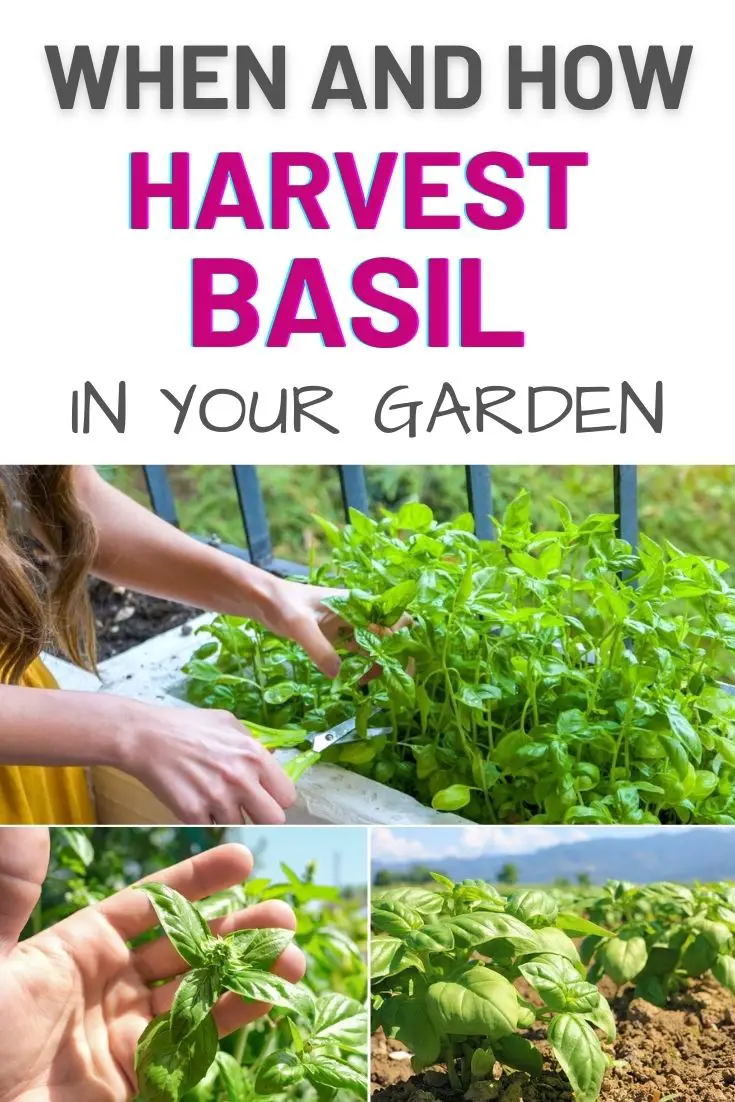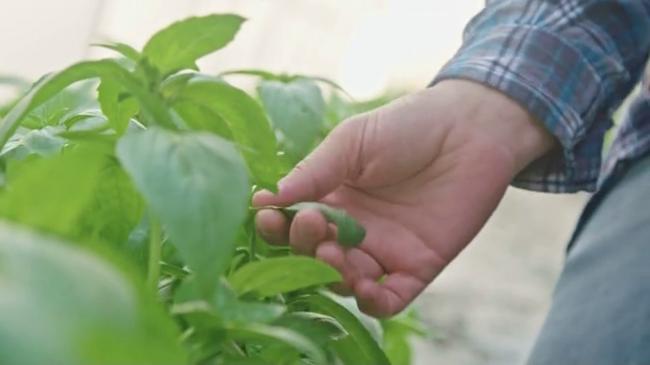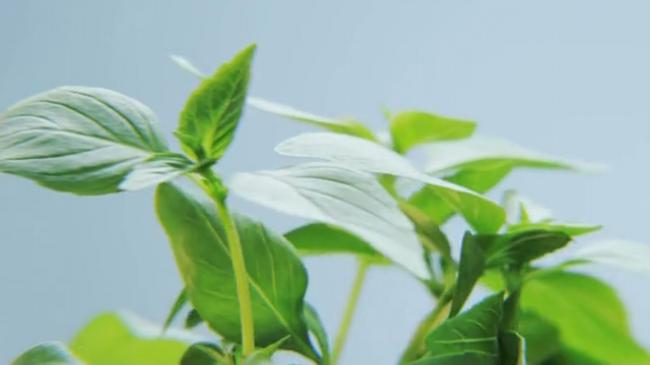Have you ever wanted to add the flavor of fresh basil to your favorite dishes, but were unsure how to harvest it? With a few simple steps, you can learn how to pick and preserve this amazing herb.
Basil, with its distinctive flavor and aroma, is a culinary herb that enriches the flavor of the food we eat. So, it’s an indispensable tool for any home herb gardener. The point of growing basil in a herb garden is to harvest it, so knowing when to do so is essential for those who are just getting started with the plant.
Once a basil plant has developed at least six leaf pairs, it is ready to be picked. Once that happens, you can periodically pick basil leaves as you need them.
It only takes a little basil to transform the flavor of a wide variety of dishes. Since even the most accomplished cooks can benefit from a few extra herbs now and then, every home should have at least one basil plant. Therefore, if you are a home cook or even just a simple plant enthusiast who wants to grow basil at home, you need to learn more about basil well enough to have a near-perpetual supply of this herb at your disposal.
When is the Right Time to Harvest Basil?
Naturally, among these herbs is basil, which is regarded as the most popular variety in the world. As its name suggests, basil has long been considered the king of herbs due to its widespread use in a wide variety of contexts, including but not limited to cooking.
While basil leaves can be purchased from a grocery store, the herb’s popularity stems from its inherent freshness. Only by maintaining a basil plant in your own home can you ensure ready access to fresh basil leaves, which can then be plucked as needed. For this reason, many chefs and famous chefs keep their own basil plants at home so that they can quickly pluck a few leaves whenever they need them in the kitchen.
So, at this point, you know that the leaves of basil plants are what you want to harvest. However, we haven’t yet addressed the question of when exactly we should pick the leaves off the basil plant. Basil leaves are best harvested when the plant is at the optimal height and the leaves are fully mature; this is especially true for the first harvest.
If you’ve just planted your own basil and haven’t yet picked any leaves, you’ll need to wait until the plant is at least 6 to 8 inches tall, or when it has enough leaves, before picking any. The optimum number of leaves is at least 6. A basil plant is ready for its first harvest once it has developed six sets of mature leaves.
As long as there are still leaves on the plant, you can continue to harvest basil leaves as needed after the initial harvest. If you’re making omelets for breakfast and want to give them a zing, pick a few basil leaves from your plant and chuck ’em in.
Basil leaves taste best when picked first thing in the morning. Once again, basil’s popularity stems from its inherent freshness. However, the oils in it are at their most fragrant first thing in the morning. Consequently, if you want the best taste from your basil leaves, you should pick them first thing in the morning.
When to Harvest Basil Seeds?
Harvesting basil seeds is also important if you want to ensure that you have the best kinds of basil in your herb garden. The reason is that basil plants are pollinated by different insects that carry all of the other basil plants in the area. That means that there is a chance that your basil will produce a hybrid that might not be suitable for you.
As such, you must make sure that you isolate your different basil plants from each other to ensure that they don’t pollinate one another. And when it comes to their seeds, they need to be collected carefully, especially if the plants were able to produce seeds when basil of the same cultivar could pollinate it.
To harvest basil seeds, look for the flower heads on the basil plant, cut them out, and let them dry for a couple of days in a warm and dry area. Once that is done, get a colander and crush the head of the flowers on the colander so that you will be able to collect the seeds carefully.
You should harvest basil seeds as soon as possible. The truth is that it doesn’t matter when you collect the seeds so long as they are already ready to be collected. When the flowers on the basil plants have already produced seeds, collect them whenever possible but make sure that you don’t leave them there for too long if you want to cultivate more basil plants in the future.
When to Harvest Basil for Pesto?
Basil is one of the best herbs you can use to make pesto because of how the freshness of the basil adds a depth of flavor to it. And when mixed with other ingredients, the freshness of basil only enhances the flavors of all of the different ingredients mixed with it to make pesto.
So, in that sense, when should you harvest basil if you want to turn the leaves into pesto?
Well, the answer is quite simple. Because you are after the aromatic oils that come from the basil leaves when you are looking to make pesto, you should harvest the basil early in the morning. The reason is the aromatic oils found in basil are at their peak during the morning.
So, if you want to maximize the flavor and oils naturally found in basil to make pesto, make sure to harvest in the morning soon after the sun rises. That way, you can have pesto that has more of that fresh aroma that you can only find in basil leaves.
How To Harvest Basil Leaves
Harvesting basil leaves is an easy and rewarding task. When harvesting, it’s important to remember that the tenderness of the leaves diminishes as they mature. For this reason, it’s best to harvest small amounts regularly throughout the season in order to ensure a steady supply of fresh, flavorful basil.
When harvesting, select large, healthy leaves with vibrant color and no signs of wilting or discoloration. The larger leaves should be plucked off at their base closest to where the stem connects with the main branch. This helps promote new growth from the same plant for future harvests. Cuttings can also be taken from any section of the stem containing at least three sets of leaves – just make sure not to take too much from one area! Also, avoid removing flowers unless you’re planning on deadheading them; if left intact, these blossoms may lead to unwanted seeding later in the season.
How To Harvest Basil Stems
Now that we’ve discussed harvesting basil leaves, let’s move on to harvesting the stems. When it comes time to harvest your basil plants for their stems, you’ll want to wait until they have grown at least 6 inches in length and are still rather tender—you don’t want them too woody or brittle.
Using sharp pruning shears or a knife, snip off the stem just above a set of two leaves. This will encourage the plant to produce more side shoots and continue growing. Make sure to clip only one stem from each plant so as not to damage its health. Once you’ve harvested all the stems, rinse them gently with water before using them in recipes or storing them away in an airtight container.
Basil has many uses beyond cooking; some people even use it medicinally! To make full use of this amazing herb, experiment by drying out several stems and turning them into powder or infusion tea bags. After taking these extra steps, you can store your dried herbs in labeled containers and enjoy their benefits long after your garden season is over.
The key to successful harvesting lies in knowing when exactly to cut the stems off without killing your plants. You must find the balance between harvesting enough for yourself while also allowing your plants’ room to regenerate new growths for future harvests throughout the year.
How To Pick Basil Leaves Without Killing Plant
Harvesting basil leaves is a simple process. To do so, begin by gently snipping the outermost stems at their base using sharp scissors or garden shears. Make sure not to cut too deep, as this can damage the plant’s root system and inhibit future growth. Instead of cutting off an entire stem and its leaves, simply pinch off individual leaves from each stem as needed.
This will ensure that your harvest doesn’t take more than you need and keeps your basil plants healthy for continued production. Additionally, remember to remove any yellowed or wilted leaves. Doing so encourages new leafy growth in their place and prevents the disease from spreading throughout the herb bed. With these steps taken care of, it’s time to move on to harvesting basil seeds!
How To Harvest Basil Seeds
Harvesting basil seeds is an easy task for any home gardener. It begins with the selection of healthy, mature plants that have flowered and gone to seed. The flowers should be brown or black in color before harvesting the seeds. To collect them, simply cut off the flowering stems and place them into paper bags or envelopes. Then, shake the stem upside down over a tray to dislodge the tiny round basil seeds from the stem onto it.
When all of your seeds are collected, spread them out on newspaper so they can dry completely in a warm area away from direct sunlight. Once dried, store them in glass jars or airtight containers and label each container clearly with both their common name and botanical Latin name. This will ensure you don’t confuse similar-looking varieties when planting next year’s crop!
It’s important to remember not to harvest too early as this could affect germination rates; wait until at least two weeks after petal fall before collecting your seeds. With careful selection and optimal storage conditions, these harvested basil seeds may last up to three years without losing much viability – giving you plenty of time to enjoy its delicious flavor!
How Do You Pick Basil So It Keeps Growing?
Harvesting basil is an art that one can master if one practices often. It’s essential to pick the right leaves in order for your plant to thrive and continue growing. There are a few simple steps you should follow when harvesting basil.
Try not to harvest more than a third of the foliage on any given day. You don’t want to strip your plant bare as this will stunt its growth; it needs time between harvests to replenish itself. Furthermore, always use sharp scissors or garden shears when cutting from the stem in order to reduce the damage done by pulling off with fingers and nails.
Identify mature (yet still tender) leaves which have reached their peak flavor potential – these are usually darker green and larger than other leaves on the stem. Cut just above where two branches intersect at an angle, leaving enough stem attached so that new growth will form once harvested. This process allows for continuous regrowth over successive cuttings while maintaining maximum yield per season!
How Do You Harvest Basil And Keep It Alive?
Basil harvesting is a fine art. You care about your plants’ well-being and growth, so you want to maximize their potential. When the plant is about to bloom, the leaves have reached their peak flavor and nutritional value, making this the ideal time for harvesting. When harvesting, use sharp scissors or a knife to snip off the leafy tips, taking care to avoid cutting too close to the stem.
Leave enough of the plant’s leaves unharvested so it can keep photosynthesizing and growing new ones. Instead of picking individual leaves, harvest more basil by cutting around the plant’s base, which will also keep the bush looking healthy and full.
What are your plans now that the basil has been picked? Proper storage is essential for extending its shelf life and retaining its original flavor and freshness. Store it in the refrigerator if you want to keep it for a longer period of time, or store it in a cool, dark place with good air circulation until you’re ready to use it. Your freshly harvested basil can be kept for up to two weeks if you store it correctly after picking.
How Many Times Can You Harvest Basil?
It is widely believed that you can only harvest basil once before it stops growing, but this simply isn’t true. In fact, with a bit of knowledge and patience, you can regularly enjoy fresh-picked basil in your kitchen all season long.
Basil plants are very forgiving when it comes to harvesting; they will regrow new shoots quickly after being picked. When harvesting, start by snipping the stems just above where two leaves meet at the base of the plant. This encourages lateral growth from the stem, resulting in fuller foliage for future harvests. After pruning your plants back several times during their active growing season (May through October), you should begin to notice abundant regrowth and plenty of leafy goodness for continued picking!
The trick is to be gentle with your cutting hand – never take more than one-third of each stem or plant as too much removal could cause permanent damage.
How to Harvest Basil at the end of the Season?
Harvesting basil before the winter season is essential for ensuring that you get to enjoy its wonderful flavor throughout the cold months. It’s a simple process and can be done with ease in just a few steps.
It’s important to identify when your plants are ready to harvest. Basil typically matures around 10-12 weeks after planting, so look out for signs indicating that your plant has reached full maturities such as large leaves and thick stems. If your plants have grown too tall or leggy, this is an indication that they need to be harvested soon. To determine if a leaf is mature enough to pick, simply squeeze it gently between two fingers; if it feels crisp and crunchy then it’s ripe!
Next up is the actual harvesting of the herbs itself. When snipping off individual leaves from each stem make sure not to take more than one-third of the total foliage on any single branch – this will ensure that the plant continues growing strong instead of becoming weakened by over-harvesting. Make sure you use sharp scissors for cutting purposes which will prevent bruising or tearing of delicate leaves. Additionally, never remove all at once but rather spread out harvests every 7-10 days for maximum yields.
Don’t forget about preserving your freshly picked herbs! Drying them out is a great way to extend their shelf life while still being able to reap their delicious taste and aroma come wintertime. Hang bunches upside down inside a dark room until completely dry (for best results place paper bags over each bunch). Once dry store them in airtight containers away from direct sunlight; this should keep them preserved in top condition for several months!
With proper care and maintenance, harvesting basil before winter will help you savor its flavorsome goodness right through until spring arrives again!
Did you find this post useful? Would you like to get back to it later? Save THIS PIN below to your garden, herbs, and houseplant boards on Pinterest! Thanks 🙂



